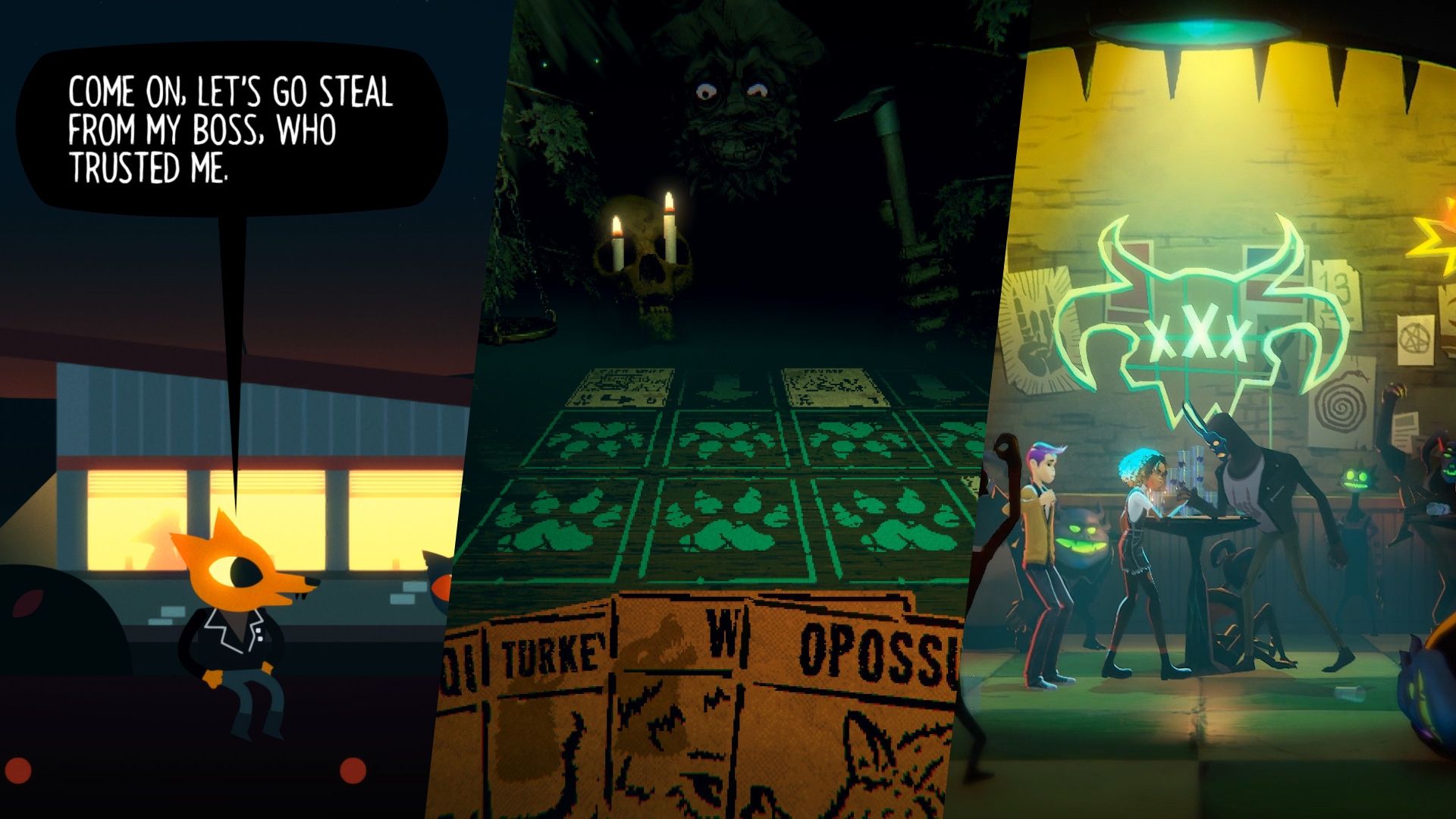Fall has arrived! The leaves are changing, the pumpkins are well spiced, and our country faces an invasion of 12 Foot Home Depot Skeletons. With Halloween right around the corner, it’s the perfect time to indulge in some spooky gaming sessions.
If you’re a fan of horror titles, there’s never been a better time for you. Capcom's Resident Evil series is running full steam ahead, Konami's finally revisiting the world of Silent Hill, and Electronic Arts recently announced a remake of the original Dead Space. Even indie devs are getting in on the action. Developers like KittyHorrorShow are proving that you can create truly terrifying experiences with a reduced budget and PlayStation 1 inspired graphics.
This is all well and good if you like horror, but what if your tastes are less Scream and more Hocus Pocus? Video games which attempt to get you in the Halloween spirit without subjecting you to a constant parade of jump scares are fewer and far between. Thankfully there's still some titles that will help get you in the spirit of the season even if you choose to keep the lights on.
Castlevania (1986, NES)

The Castlevania franchise predates the modern concept of a horror game, but it’s the embodiment of campy Halloween vibes. You take control of a whip swinging vampire hunter and seek to conquer none other than Dracula himself. The first Castlevania title was released at time in the Nintendo Entertainment System’s history when developers were still playing a little fast and loose with intellectual property laws. The Dracula you’re hunting is clearly in the Bram Stoker vein, and he’s backed up by a rogue’s gallery of MGM inspired movie monsters. The Mummy and Frankenstein’s Monster both make an appearance as stage bosses, and you’ll face a small army of Black Lagoon-style swamp creatures.
This is all presented as a straightforward side scrolling action platformer without a jump scare on sight. Truly the most terrifying thing about Castlevania is its difficulty. Konami made a platformer that’s comfortably in the pantheon of “Nintendo Hard” games, but Castlevania is an atypically fair NES challenge. There's very little randomness in the game, so every encounter in Castlevania plays out roughly the same way every time. This encourages the player to experiment and discover the best approach for each stage layout and enemy configuration. It’s a game that wants you to beat your head against it and memorize every last jump, but your patience will be rewarded.
It’s also a formula that works exceptionally well with save states. If you’re not against a bit of modern convince, Castlevania is well worth a revisit if you haven’t fired it up in a while.
Gargoyle's Quest (1990, Game Boy)

If you’re looking for a bit more of a deep cut, take a look at the early Game Boy adventure game Gargoyle’s Quest. It may not be obvious at first glance, but this game is actually part of the Capcom's Ghost n’ Goblins franchise. This franchise is a bit of a mirror image to Castlevania, with an infamous amount of random enemies and cheap deaths. The original arcade game went as far as to include an enemy known as the Red Arremer, who was specifically designed to kill the player every three minutes in order to milk another quarter for amusement vendors.
Gargoyle’s Quest keeps much of this punishingly difficult philosophy, but it puts you in the shoes of the feared quarter muncher. In a bit of an unfortunate localization quirk, Gargoyle's Quest's box art shows a notably green protagonist, while all of the game's NPCs comment on your Red Arremer's striking crimson complexion. This change in protagonist is far more than cosmetic. Your skill set has been greatly expanded from the simple attacks and jumps of Ghost n’ Goblins' knight Author. Firebrand can use his claws to climb walls, and can flap his wings to hover over pits and other traps.
This helps make Gargoyle's Quest into a much more exploratory adventure. While the majority of the game plays out as a side scroller, the game's format has been expanded a bit from its arcade roots. There’s an over world map to explore, and light RPG elements have been added to increase the strength and combat repertoire of your winged beast. Despite being a portable adventure, Gargoyle's Quest is an early entry in the nascent Metroidvania genre.
This is another title that benefits greatly from save states. The real standout aspect of this game is its soundtrack, so at least you’ll have some spooky Game Boy chiptunes to hum along with while getting killed by a horde of demons.
Luigi's Mansion (2001, GameCube)
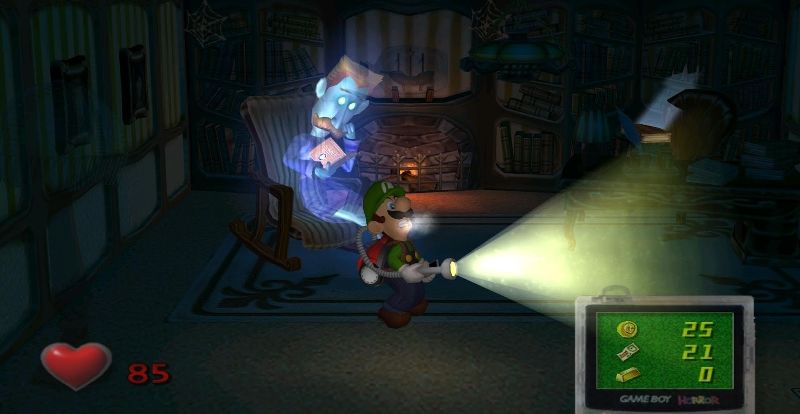
Mario is missing! (Again!) Rather than having to solve geography trivia, Luigi’s second leading role sees the green plumber reluctantly stepping into the shoes of a vacuum-wielding ghostbuster.
Luigi's Mansion was one of the few launch titles for the Nintendo GameCube, and it was a noted departure from the usual Mario-focused action platformer. Luigi's Mansion was a great showcase for what the new system could handle, focusing on impressive particle effects, transparencies, and even some early cloth simulations. Your vacuum could collect stray dust and coins, tug on window curtains, and naturally suck up the haunted mansion's horde of ghosts and boos.
This game is masterclass in tone setting. As Luigi stalks through the mansion's halls, he'll begin to anxiously hum along with the game's background music. Much of the green plumber's modern day scaredy-cat personality was canonized here, but thankfully the game is about as terrifying as Disney's Haunted Mansion ride. (Which is to say, not very.) Still, it does a good job of getting you in the mood for a few good startling ghost reveals. This game is about as close as this list gets to jump scares.
If you do decide to revisit this game, just make sure you have a controller with analog triggers. Luigi’s Mansion lets you set the intensity of the vacuum based on how hard you hold the button down, and it’s an easy detail to miss. The Dark Moon sequel on the Nintendo 3DS is also a solid entry if you’d instead like to toy with stereoscopic 3D gimmicks. Finally, the most recent Luigi’s Mansion 3 on the Switch has a couch co-op mode for bringing a friend along on your ghost catching adventure.
Ghost Trick: Phantom Detective (2010, DS, iOS)
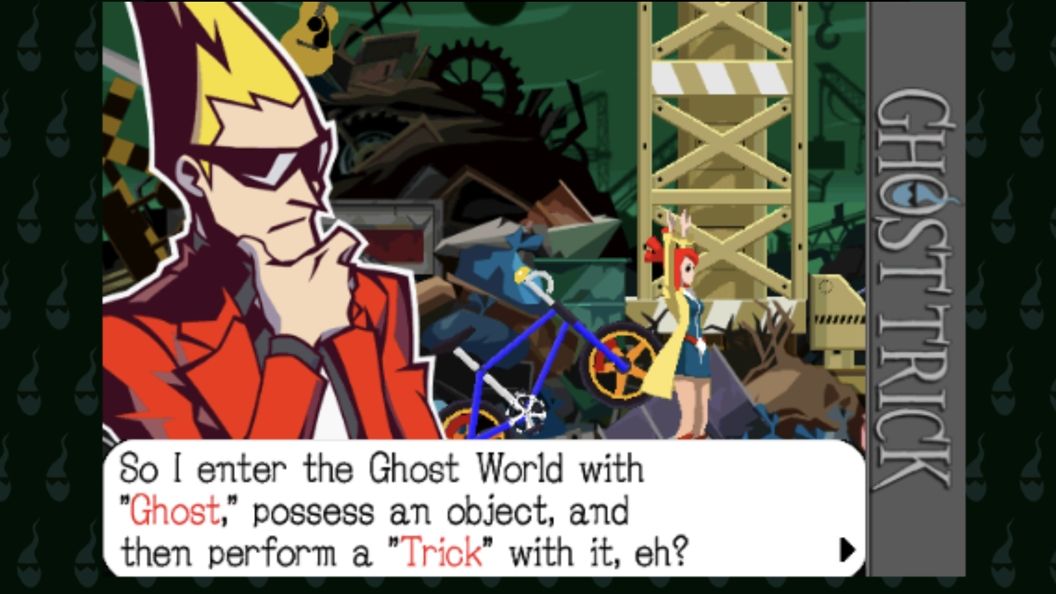
Awakening with no memories of how he died, the wandering spirit of Sissel has just one night to figure out who he is and what lead to his untimely demise. His past seems inextricably linked with a young detective with an unfortunate penchant for dying herself. Thankfully Sissel possesses the unusual ability to travel back in time to 4 minutes before someone’s death in an attempt to alter their fate.
Ghost Trick hails from the golden era of Nintendo DS visual novels. It features an all-star creative team, fresh off their success from the original Phoenix Wright trilogy. The game features beautiful rotoscoped animations, and is a bit more puzzle oriented than the Ace Attorney titles.
This title attempts to capture that unusual spectral experience of having very limited means of interacting with the world of the living. Your spirit can't be seen by other people, so you need to possess and nudge a variety of inanimate objects to try and influence the scene around you. You’ll need to create increasingly elaborate Rube Goldberg machines on your quest to uncover your past.
Phantom Detective hasn't gotten nearly the same amount of attention from Capcom as the Ace Attorney series, but thankfully the company published a solid iOS port in 2012. It miraculously still runs on modern iPhones (albeit with increasingly large borders around the gameplay), but unfortunately it never received an official Android port.
Night in the Woods (2017, PC, Consoles)

Mae Borowski has returned from college early to her sleepy coal mine town for reasons she’s not quite ready to discuss, and is looking to reconnect with her childhood friends. All the while, something strange is brewing in the woods surrounding Possum Springs.
Night in the Woods is a slow burn. Its writing expertly captures the feeling of lazily passing the time with familiar friends, all the while exploring the existential discomfort of realizing how much the people and places in your life have changed.
This is the quintessential “Fall Vibes” game. One of the focal points of the narrative is the town’s Halloween-like “Harfest” festival, and the devs included several nice touches to mark the passing of the season as the narrative progresses. Whether you’re looking for something to get in the autumn mood, or just want to indulge in one of the best Millennial coming of age stories, Night in the Woods is worth a look.
Afterparty (2020, PC, Consoles)
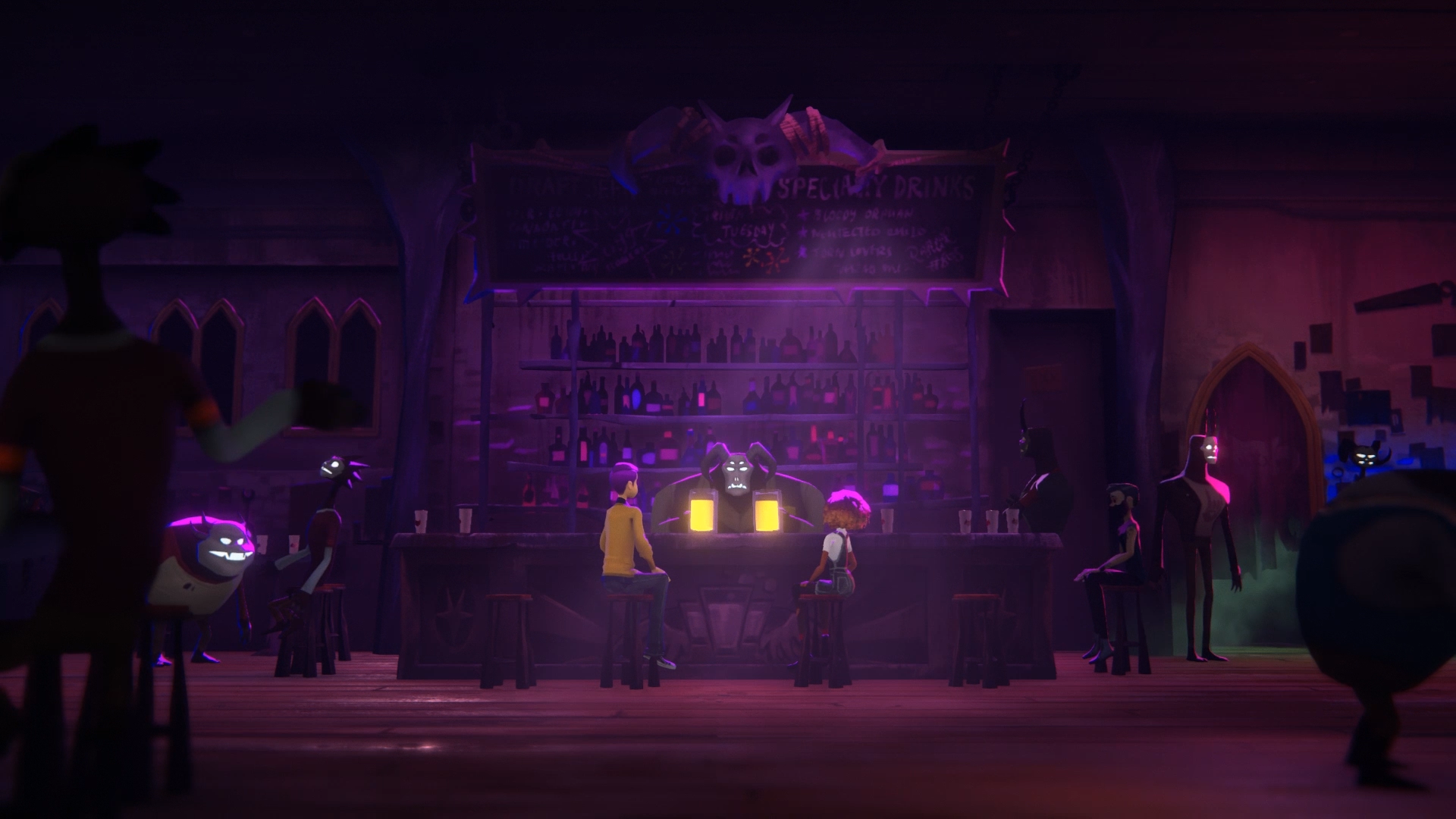
Amnesia and death seem to go hand in hand in video games. Milo and Lola have decided to go out to one last party after graduating college, only to discover that they’ve awoken in hell. The two get assigned their own personal demon, and are staring down an eternity of damnation and torture.
…until they’re saved by the bell. The afterlife in Afterparty is styled after a college town. Demons torture human souls from nine to five, but everyone mingles and relaxed during their off hours. Milo and Lola have until the beginning of their next shift to figure out a way out of hell, and it seems like they only have one option: They need to out-drink Satan himself.
Night School Studio iterated on the graphical adventure game framework first used in their earlier Oxenfree game. It plays much more fast and loose with dialog, allowing characters to carry on a conversation while you navigate and explore a location. The game even gives you the unusual option of simply choosing not to respond to a given piece of dialog. After all, sometimes it's better to let others have the last word.
Afterparty is a sharply written humorous romp through hell. Milo and Lola play off each other well, and the Night School Games team has some playful takes on underworld tropes that should amuse anyone who’s sunk dozens of hours into Hades and is looking for a fresh spin.
Inscryption (2021, PC, Consoles)
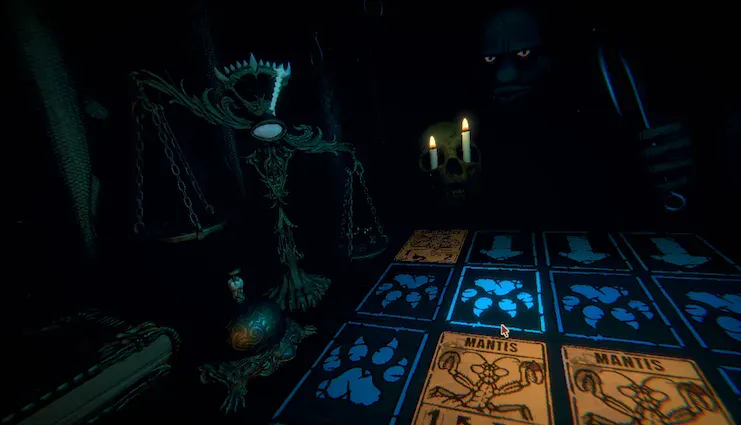
Continue?
Inscryption thrusts you into a game already in progress. You're sitting at a table across from a stranger in a dimly lit cabin. He welcomes you back, and gives you a refresher on the rules for the titular card game.
Not everything is as it seems however. Despite presenting itself as a straightforward roguelike card game, Inscryption immediately begins to set itself apart from the likes of games like Slay the Spire or One Step From Eden. You quickly discover that you can step back from the table and explore the cabin you find yourself locked in, and it's not long before one of the cards in your deck starts offering you advice on how to escape.
There are genres and tropes one can use to describe Inscryption, but it is truly one of those experiences that is more than the sum of its parts. It leverages conventions from card games, roguelikes, escape rooms, and even "found footage" films. Inscryiption is all about the smaller touches though. This is a game that lets you lean forward to look at the cards on the table, lean back to study your hands, and scope out the rest of the room you're playingin. The whole package is wrapped up in an unsettling tone that should feel right at home for fans of Daniel Mullins' other works. (If card games aren't your thing, perhaps check out the coding and logic puzzles of his earlier game Pony Island.)
Inscryption is overflowing with suspense. More often than not, your opponent is a candle-lit pair of floating eyes. The game has a few truly horrific moments littered throughout its narrative, but it rarely delves into the realm of the terrifying. It's a title that has you constantly asking what's going to happen next, and it largely delivers on a satisfying narrative. It has a story it wants to tell, and leverages enough roguelite mechanics to help players through any rough spots they may encounter. If you're looking for a game to spook you this Halloween season, you'd be hard pressed to find a more perfect candidate.
